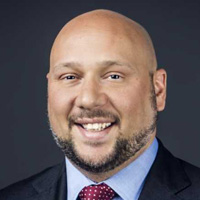An Easy Way to Find How Much You Will Spend in Retirement
One simple math equation can help you determine where to start building your retirement income plan, and whether your money should last.

How do you know when you can retire? The answer seems simple: When you have enough income coming from your investments and other sources to sustain your lifestyle.
The problem for many retirees and those who are starting to think about retirement is they don’t have a firm handle on how much money they spend each year. Not knowing that number or planning for it can be the difference between someone having a great retirement and someone running out of money.
Luckily, this is usually easy to figure out. Most people have one or two checking accounts from which all the bills are paid — credit cards, mortgage, cash withdrawals, etc. On your bank statement, banks total up everything that happened with your account during the month, including:
From just $107.88 $24.99 for Kiplinger Personal Finance
Become a smarter, better informed investor. Subscribe from just $107.88 $24.99, plus get up to 4 Special Issues

Sign up for Kiplinger’s Free Newsletters
Profit and prosper with the best of expert advice on investing, taxes, retirement, personal finance and more - straight to your e-mail.
Profit and prosper with the best of expert advice - straight to your e-mail.
- Starting balance
- Deposits (how much new money came into the account)
- Withdrawals and debits (how much money came out of the account)
- Ending balance (how much money was left at the end of the month)
All you do is take the last 12 monthly total withdrawal numbers and add them up. That total is how much money is going out the door each year. This can be a little shocking, as we see most people are off by about 30%, and sometimes much more.
Knowing the dollars going out the door will give you a clearer idea of how much money needs to come in the door in retirement. Remember, that last stage of your life could last 20 to 30 years or more — basically as long or longer than many people live in one house. After you know how much you spend in a year, it’s time to carefully craft a plan for retirement income.
Look at it this way: Building a solid retirement income plan is similar to constructing a sturdy, comfortable house. Like the home-building process, there are three main components to a financial plan for retirement: the foundation, the walls and the roof. Here is a breakdown of each and how it pertains to your retirement planning:
The foundation
Foundational money is money that needs to be secure and produce predictable income that will last for your lifetime. You don’t want to have money that you know you need to live off of in a place where it could lose value.
This is predictable money — you know how much is coming in, when it’s coming and how long it will last. Foundational money, which should be used to cover your core expenses, includes such funds as those from Social Security, pensions and rental properties.
It’s worthwhile for some people to delay taking Social Security. For example, a single person without many assets might want to work as long as possible and delay Social Security benefits to increase their monthly check. Full retirement ages (FRA) for Social Security span from 66 years to 67 years.
Delayed retirement credits are a reward Social Security gives you for putting off claiming your retirement benefit. Credits accumulate for every month from your FRA until age 70 that you postpone filing for benefits. Those delays add 8% per year for every year you wait. For example, wage earners who reach full retirement age at 67, but delay claiming benefits until age 70, will receive an extra 24% tacked on to their monthly payment.
With pensions, having the joint-and-survivor benefit option is crucial in providing a financial safety net for a surviving spouse. If the pension earner selects the survivor’s benefit, that means a guarantee of steady income to the surviving spouse, sometimes 50% or 75% of the original benefit. People sometimes select the lifetime-only benefit because it pays the highest monthly benefit, but it will be paid only while the pension-earning spouse is alive.
The walls
Much like the walls of a home provide protection from the weather and help support the roof, the walls in a retirement plan are stable, relatively safe investments with minimal risk that add security for the retiree. These funds include certificates of deposit, fixed annuities and bonds. They are much less volatile than stocks, provide dividends and interest, and allow one to pull money for special occasions, vacations, hobbies and things retirees typically like to do during their first 10 years of retirement.
A fixed annuity provides a predictable source of retirement income. It offers a guaranteed rate of return, regardless of whether the insurance company earns a sufficient return on its own investments to support that rate. The risk is on the insurance company. One downside of a low-paying fixed annuity is it may not keep up with inflation.
Top-paying CDs pay higher interest rates than most savings and money market accounts in exchange for leaving the funds on deposit for a fixed period. They offer lower opportunities for growth than stocks and bonds, but have a guaranteed rate of return.
High-quality bonds offer a steady, though relatively low, return with a low risk to the principal investment. Interest payments in retirement are a good way to supplement income. The key difference between bonds and annuities is that the interest payments come for a set period with a bond, whereas annuities often pay for the rest of your life.
The roof
These are riskier types of investments, such as stocks, mutual funds, exchange-traded funds, real estate investment trusts (REITs), precious metals like gold and silver and variable annuities. These funds should have a 10-year-plus time horizon on them and, since the point of having them is to realize financial growth, they are the best sources for keeping up with inflation.
With a house, most people have to re-shingle the roof after a certain period of time because it takes a beating from the weather. The same can be true of the markets: Their volatility means, at times, one needs to adjust.
Putting the roof on your financial house involves calculated risk for long-term growth. The rule of 100 is a helpful guide to determine the maximum percentage of a portfolio that should be invested in risky instruments. Take the number 100, subtract your age, and that number determines the percentage of money that can be at risk. The closer you get to retirement, the lower percentage you should risk in the roof.
For example, a 55-year-old, following the rule of 100, would invest 45% of their portfolio in stocks and mutual funds, while someone who is 65 would dial it down to 35%.
Your home is built to last. Likewise, your retirement plan should be solid from the foundation to the roof. And like a well-built home can bring happy memories for decades, a financial strategy carefully balancing security with growth can give you the enjoyable retirement you deserve.
Dan Dunkin contributed to this article.
Investment advisory services offered through Virtue Capital Management, LLC (VCM), a registered investment advisor. VCM and Bella Advisors are independent of each other. Patrick Mueller and/or Bella Advisors are not affiliated with or endorsed by the Social Security Administration or any other government agency.
The appearances in Kiplinger were obtained through a PR program. The columnist received assistance from a public relations firm in preparing this piece for submission to Kiplinger.com. Kiplinger was not compensated in any way.
Profit and prosper with the best of Kiplinger's advice on investing, taxes, retirement, personal finance and much more. Delivered daily. Enter your email in the box and click Sign Me Up.

Patrick Mueller, president of Bella Advisors, is a licensed investment adviser representative, an RFC (registered financial consultant) and co-author of "Dare to Succeed." He has passed the Series 65 securities exam and is a licensed insurance agent in Georgia, Alabama and Florida.
-
 December Fed Meeting: Live Updates and Commentary
December Fed Meeting: Live Updates and CommentaryThe December Fed meeting is one of the last key economic events of 2025, with Wall Street closely watching what Chair Powell & Co. will do about interest rates.
-
 This Is Why Investors Shouldn't Romanticize Bitcoin
This Is Why Investors Shouldn't Romanticize BitcoinInvestors should treat bitcoin as the high-risk asset it is. A look at the data indicates a small portfolio allocation for most investors would be the safest.
-
 I'm a Federal Benefits Pro: I Answer These 2 Questions a Lot
I'm a Federal Benefits Pro: I Answer These 2 Questions a LotMany federal employees ask about rolling a TSP into an IRA and parsing options for survivor benefits, both especially critical topics.
-
 Why Investors Shouldn't Romanticize Bitcoin, From a Financial Planner
Why Investors Shouldn't Romanticize Bitcoin, From a Financial PlannerInvestors should treat bitcoin as the high-risk asset it is. A look at the data indicates a small portfolio allocation for most investors would be the safest.
-
 I'm a Financial Pro Focused on Federal Benefits: These Are the 2 Questions I Answer a Lot
I'm a Financial Pro Focused on Federal Benefits: These Are the 2 Questions I Answer a LotMany federal employees ask about rolling a TSP into an IRA and parsing options for survivor benefits, both especially critical topics.
-
 Private Credit Can Be a Resilient Income Strategy for a Volatile Market: A Guide for Financial Advisers
Private Credit Can Be a Resilient Income Strategy for a Volatile Market: A Guide for Financial AdvisersAdvisers are increasingly turning to private credit such as asset-based and real estate lending for elevated yields and protection backed by tangible assets.
-
 5 RMD Mistakes That Could Cost You Big-Time: Even Seasoned Retirees Slip Up
5 RMD Mistakes That Could Cost You Big-Time: Even Seasoned Retirees Slip UpThe five biggest RMD mistakes retirees make show that tax-smart retirement planning should start well before you hit the age your first RMD is due.
-
 I'm a Wealth Adviser: My 4 Guiding Principles Could Help You Plan for Retirement Whether You Have $10,000 or $10 Million
I'm a Wealth Adviser: My 4 Guiding Principles Could Help You Plan for Retirement Whether You Have $10,000 or $10 MillionRegardless of your net worth, you deserve a detailed retirement plan backed by a solid understanding of your finances.
-
 A Retirement Triple Play: These 3 Tax Breaks Could Lower Your 2026 Bill
A Retirement Triple Play: These 3 Tax Breaks Could Lower Your 2026 BillGood news for older taxpayers: Standard deductions are higher, there's a temporary 'bonus deduction' for older folks, and income thresholds have been raised.
-
 If You're Retired or Soon-to-Be Retired, You Won't Want to Miss Out on These 3 OBBB Tax Breaks
If You're Retired or Soon-to-Be Retired, You Won't Want to Miss Out on These 3 OBBB Tax BreaksThe OBBB offers some tax advantages that are particularly beneficial for retirees and near-retirees. But they're available for only a limited time.
-
 Waiting for Retirement to Give to Charity? Here Are 3 Reasons to Do It Now, From a Financial Planner
Waiting for Retirement to Give to Charity? Here Are 3 Reasons to Do It Now, From a Financial PlannerYou could wait until retirement, but making charitable giving part of your financial plan now could be far more beneficial for you and the causes you support.
